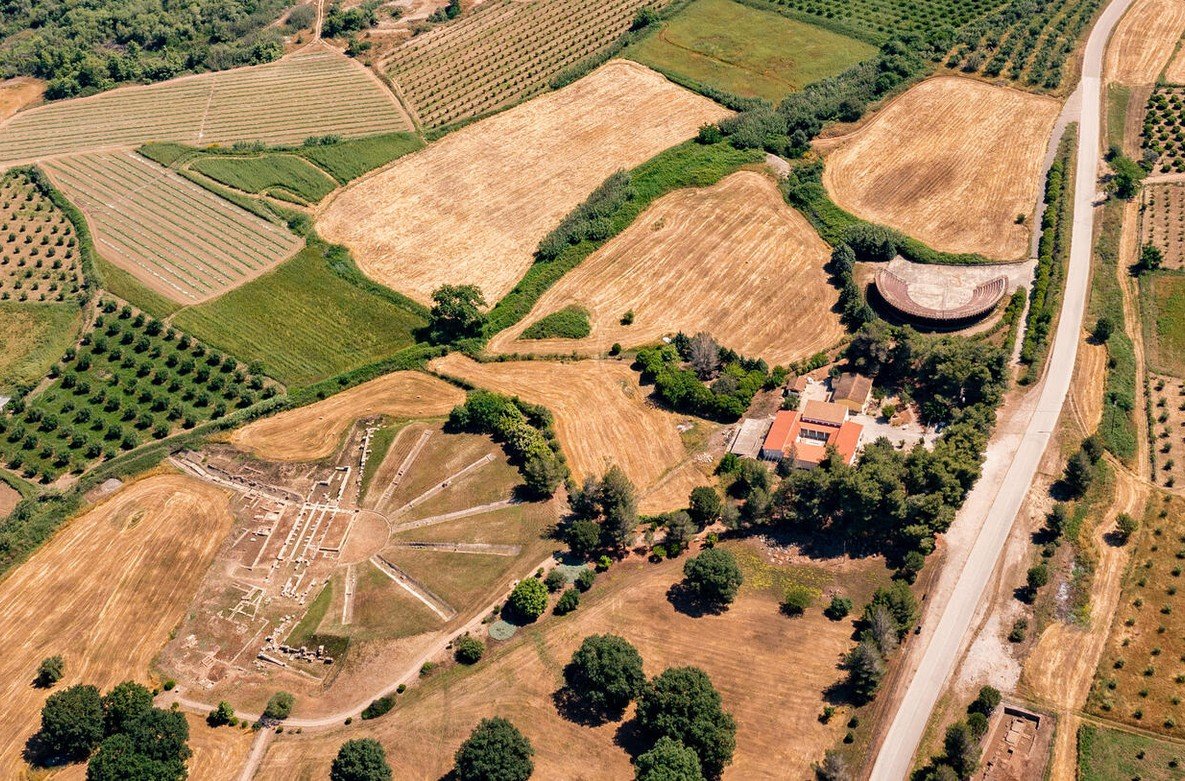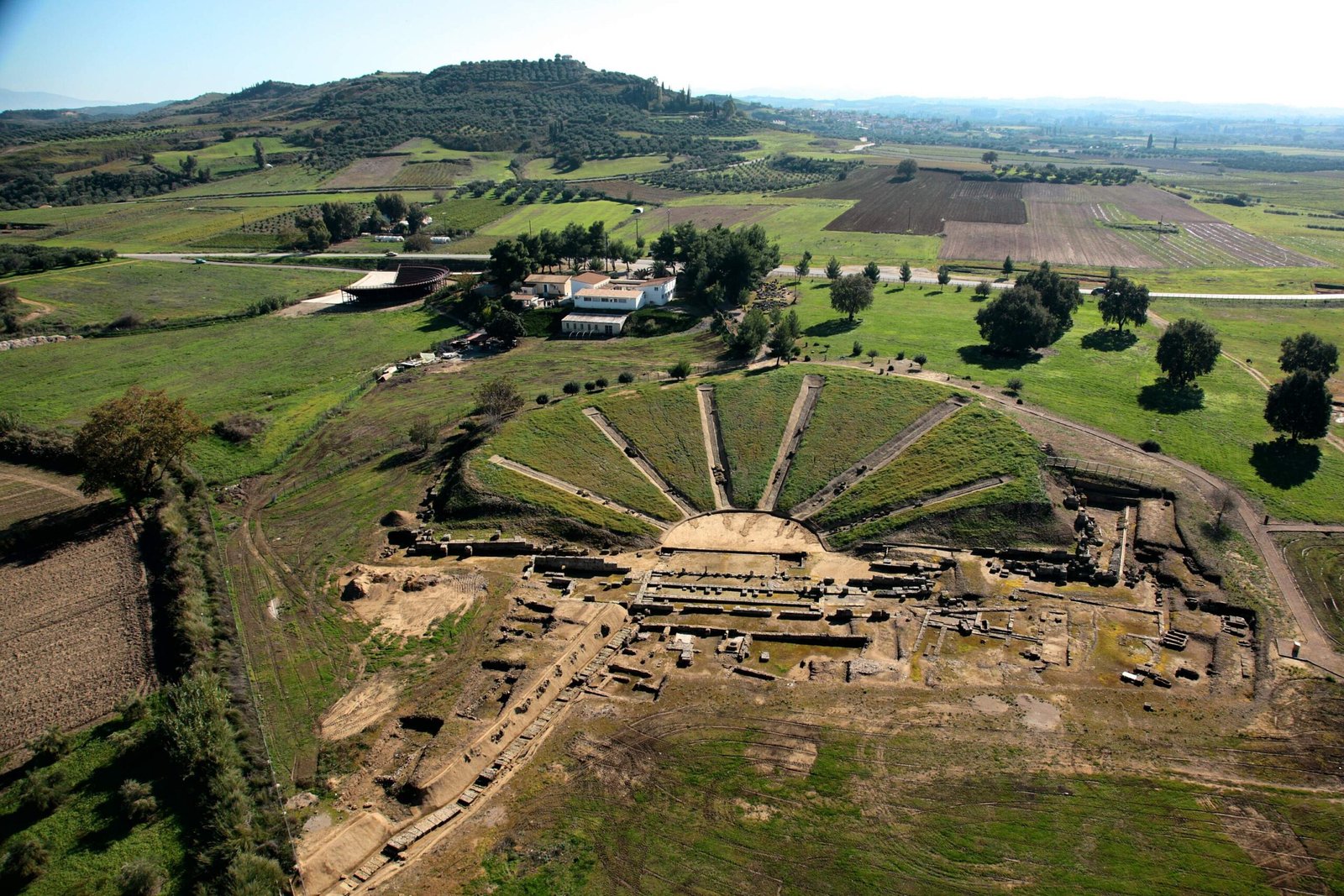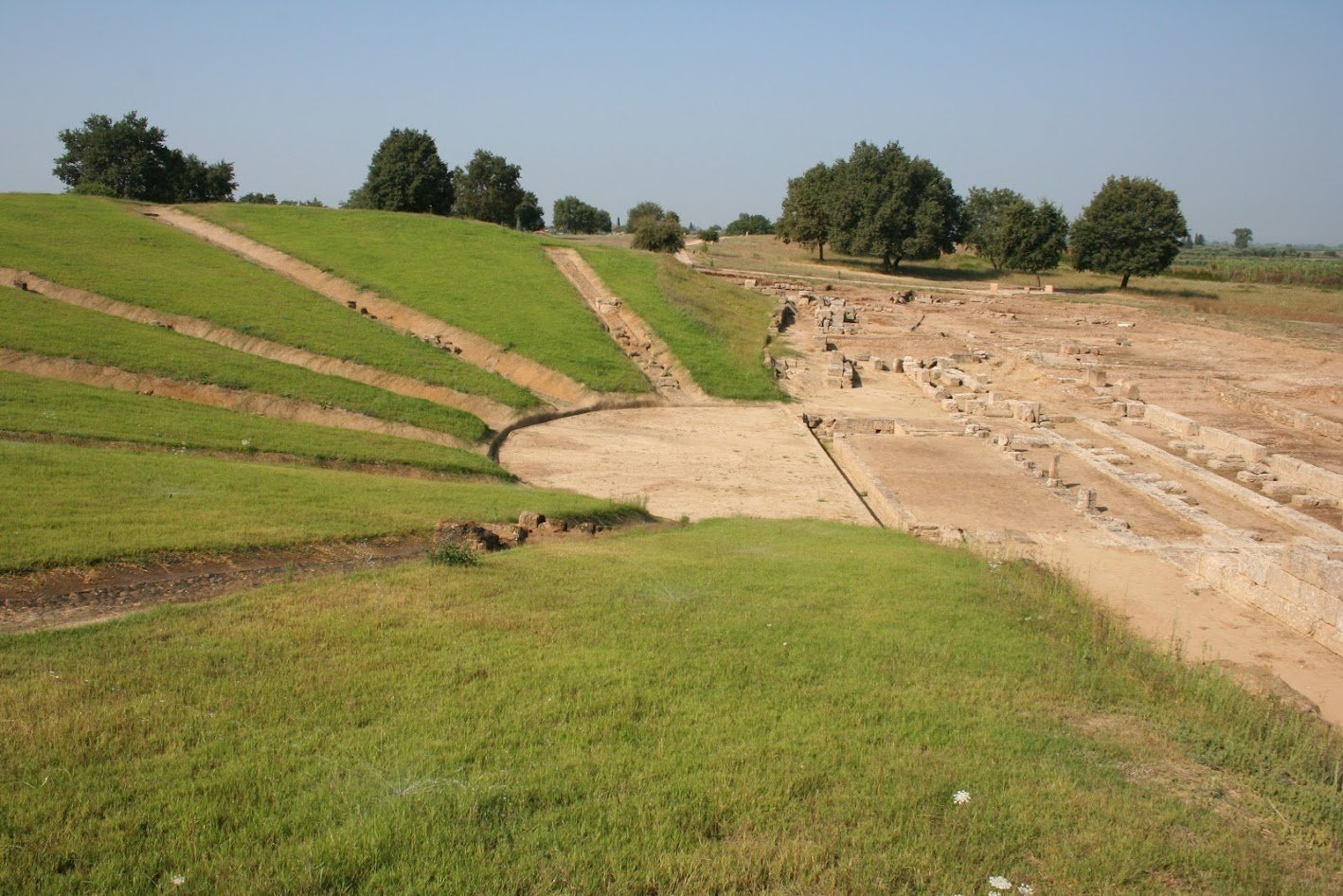The theatre of Elis is the most important monument that has come to light so far from the archaeological excavations. It was built in an idyllic location near the banks of the Pinios river, so that the performances and events that unfolded on the stage and the orchestra of the theatre had the valley as a background just before the earthy hills were erased and turned into a plain.
Next to the theatre was a sanctuary of Dionysus with a cult statue which was created by the great Athenian sculptor Praxiteles.
Some of the basic information that gives us its identity is as follows:
- It was built in the 4th century BC and underwent alterations in the Hellenistic and Roman periods.
- The stone stage with its proscenium and backstage is one of the oldest in ancient Greece.
- Six ascending corridors, about one metre wide, paved with river stones (crocals), divided the hollow into seven stands. Strong retaining walls held the backfill of the cavern and formed the two lanes of the theatre with the side chambers of the stage.
- The spectators were not seated in the stands but on the slopes of the earthen hollow, just like in the stadium of Olympia.
- Access was by six stone stairs that divided the cave into seven stands. A complete drainage system secured the theatre from the risk of flooding.
- The operation of the theatre was interrupted in the late Roman years, when the general decline of the city occurred, and a cemetery with clusters of cist and tile-roofed graves was created in the area.
- The theatre was already discovered during the first investigations carried out in Elis in the period 1910-1914 by the Austrian Archaeological Institute, led by the archaeologist Otto Walter.
- Since the early 1990s, the ancient Theatre of Elis hosted unique performances of ancient drama and comedy in the framework of the Festival of Ancient Elis, which became very popular. Today, for the performances and other cultural events of the Festival of Elis, the modern wooden theatre built by the Ministry of Culture near the ancient theatre is used and started its operation in 2006.






